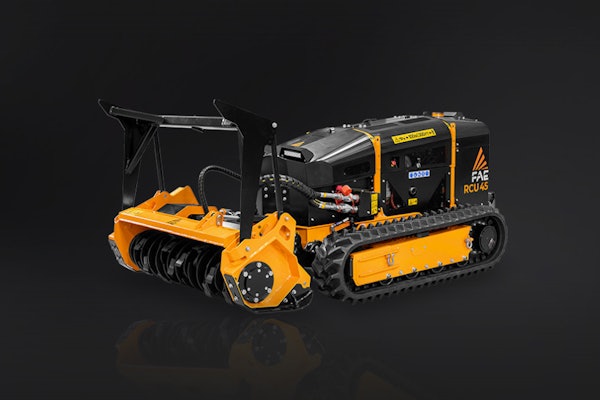Hydroseeding is a one-step method of seeding that was invented as a way to seed steep banks along interstates where erosion control is a high priority.
“Hydroseeding, basically, is mixing materials together in a tank and then applying those materials through a pump, then either through a hose or through a tower discharge to get those materials on the ground,” explains John Imm, senior product specialist, Finn. “As far as the materials go, basically you’re mixing them together and putting some growth stimulants and microbial additives into the tank. Those additives coat the husk of the seed and allow nutrients in the soil to be released so the seeds will germinate. The idea is for the seeds to thrive on the residual fertilizers and additives that are left in the soil.”
“The seed, along with protective mulch, the fertilizer and other additives can be applied in one step,” notes Ray Badger, president, Turbo Technologies. “Hydroseeding eliminates the need for straw which often blows away and can carry weed seed to the new lawn. It is also easy to seed irregular areas such as around lawn features, walkways and even the narrow strips of lawn that are often found between the curb and sidewalks.”
Even better, Imm says that hydroseeding units provide landscapers with faster establishment of turf than conventional application systems. “With the right additives in the tank, hydroseeders are capable of speeding up the germination process by as much as 50 percent,” he says. “And that’s important because what you’re really looking for, particularly from an erosion control standpoint, is quick germination of the turf or seed that you’re putting into the slurry.”
“Hydroseeding can be a superior method of installing a new lawn compared with either dry seeding or sod,” Badger adds. “The contact of the seed with water in the slurry will often jump-start the seeding process, resulting in faster germination and fewer weeds. Sod offers instant gratification but hydroseeding grows the grass on soil that is native to the lawn. When sod is cut the roots of the grass are cut short causing stress on the grass plant. Sod will usually shrink, and if it is not installed by someone experienced it can result in gaps between the sod. With hydroseeding, in a few short weeks the result can be a sod-quality lawn that is far healthier and less than one-third of the cost.”
A reasonable investment
Hydroseeding equipment has evolved over the past several years to the point where there’s a unit that will meet any landscaper’s needs – from large, truck-mounted sprayers, models that fit in the bed of a pickup truck or skid-mounted units that can be placed directly on a jobsite.
Hydroseeders are classified by projected site inventory and application of materials based on “per 100 gallons of water,” says George Braun III, vice president of operations for Reinco. “The units are manufactured based upon ‘working volume’ (how much water is required per batch), and a freeboard area to provide for materials displacement in that water,” he explains. “A 1,000-gallon unit would therefore have a 1,000-gallon working volume and a freeboard allowing for up to 1,250 gallons of total slurry capacity. Materials are then selected for placement on a per square foot application and charged according to the machine’s capacity.”
Generally speaking, Braun says, trailer-mounted units are limited to 1,000 gallons working volume due to roading requirements. “All units are available as skid mounts for temporary installation to a truck bed, leaving the truck available when the machine is not required. Fixed chassis (including flatbed, or roll off) configurations are offered for units from 1,000 to 3,000 gallons working volume. A 2,000-gallon unit is typically the limit for secondary road ‘charged’ vehicle operations. A 3,000-gallon unit requires a tag (or pusher) axle for roading when fully charged and are generally used where mobility is limited to the site.” Also, Braun cautions, any liquid-carrying tank requires a driver’s CDL endorsement whether truck mounted or trailered, which should be factored into your considerations before making a hydroseeder purchase.
Deciding what size of hydroseeding unit to buy is always a difficult choice, Badger notes. He feels a 300-gallon capacity unit is best suited for most residential work. “These large-sized units are generally priced between $4,000 and $12,000 and allow you to do small jobs effectively, but are still big enough to handle larger jobs,” he notes. “But even lower priced hydroseeding units on the market today are still excellent machines. So if you’re on a tight budget, you can opt for a 100- or 150-gallon unit with a nurse tank to get started with an investment of as little as $2,000, then trade for a larger machine later on.”
Imm says there’s a final element many landscapers overlook when they acquire a hydroseeder: marketing. “You’ve got to let the world know that you have this service to offer, and why it’s beneficial,” he stresses. “Just simply getting the word out about hydroseeding can do more for your business than anything else.”






